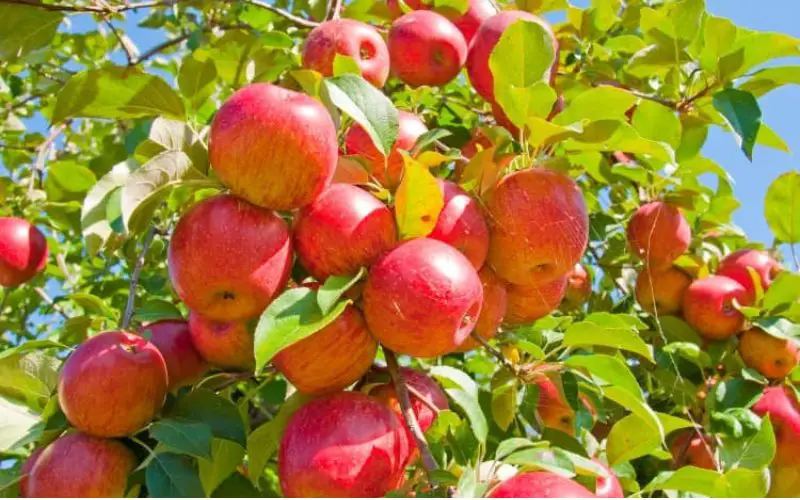It is widespread to hear people say that nothing grows in the mountains. It is almost true if you plant just anything there. If you live in high-altitude areas, your best bet is to look for plant varieties that can thrive here.
Apple is one tree that can do well in attitudes higher than 2400 meters, but the catch is here – not all plant varieties can grow in so high an area.
Suppose you want to grow apples in a high-altitude area. You must go for specific varieties that can thrive there, like Red Delicious, Golden, Lodi, Granny Smith, Haralson, Fireside, Cox Orange, and Harvard.
Why Are High Altitude A Concern For Growing Certain Plants
Altitude means the elevation of an area or the vertical distance of the place above average sea level. A place is said to have a high altitude if they reach at least 2,400 meters (8,000 feet) into the atmosphere from the sea level. To put this in perspective, Mount Everest is the most high-altitude point on Earth. It stands 8,850 meters (29,035 feet) above sea level.
The altitude of a place affects the climatic condition, which invariably affects man and the plants they can grow. Areas with high altitudes have low air pressure and density which people call “thin air.” Decreased pressure causes less oxygen to be available, so even the human body struggles in high altitudes, to say nothing of trees.
In high-altitude areas, there is a short growing season, very harsh and freezing winter months, and poor soil quality due to the dry, rocky, and volcanic soil, not to mention the fact that you have to watch out for pests and wildlife, particularly deer. Combining all these factors could make it difficult to grow certain plants in such areas.
To grow plants in high altitude areas, you must take care of the inadequacies by applying fertilizer more frequently, taking care of pests and wildlife, and most importantly, growing the right kind of plants adapted to such climatic conditions.
What Are The Best Apple Trees For High Altitude?
Apple varieties that can produce fruit at high altitudes can tolerate cooler, shorter growing seasons and harsh winter conditions. These apple trees are dwarf rootstock hardy, late-blooming, and early maturing.
It is also essential to choose a location where the apple tree can be grown to take advantage of sun and wind protection and maximize its ability to grow.
Here are some apple varieties that can grow at high altitudes:
Red Delicious Apples
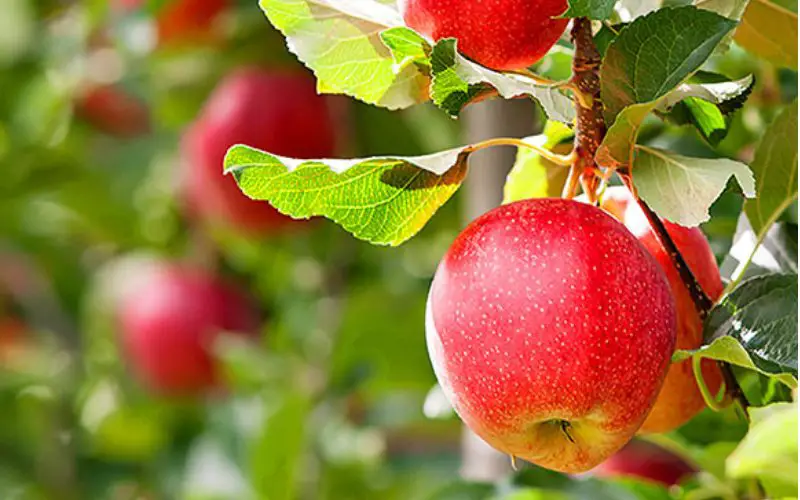
Red delicious apples are crisp and juicy apples with thick skin, a hint of acidity, and notes that remind one of melon. These apples can grow in high altitude because it thrives in cooler climates in zones 5-8. The fruit ripens from late September to October.
For very flavourful Red Delicious, they are best picked off the trees than those that fall themselves. The longer a Red Delicious is left on the tree, the sweeter and more aromatic it becomes.
The tree can grow up to 25 feet as much as it gets full sun to bear fruit. They love to grow in acidic and well-draining soil.
Red delicious apples must be watered frequently because the soil needs to be moist and not drought-tolerant. These apples are susceptible to mildew and apple scab, so you must treat them with fungicides. They also need to be pruned at least once or twice annually, and in 6 to 10 years, Red Delicious will fully mature.
Golden Delicious Apple
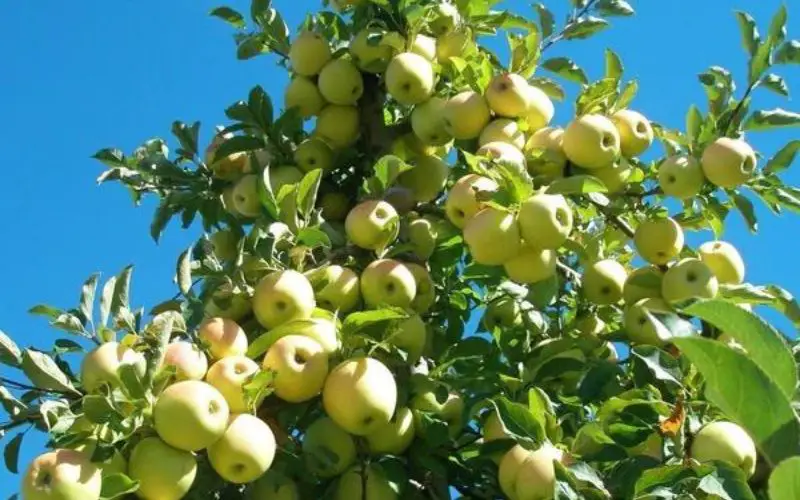
Golden delicious apple is another apple variety that thrives in high-altitude areas. These apple trees are self-pollinating and hardy and do well in USDA zones 4 through 9. They are medium to large yellow apples that have some mild, sweet flavor and can be found in dwarf, 8 to 10 feet (2-3 m.), and semi-dwarf, 12 to 15 feet (4-4.5 m.),
To grow a delicious golden apple tree, you need a place where they can get full sun in well-drained soil. Even though these trees are heat tolerant, they can still endure the cold in a high-altitude area.
This tree is prolifically producing many apples that can weigh down on the tree branches. With proper watering, a little fertilizer in the spring, and pruning in the winter, you are on your way to successfully growing delicious golden apples in high mountains.
In 4 to 6 years, a delicious golden apple can mature and reach a height of about 8 feet (2m.). The fruit will be ripe in September and will keep for 3 to 4 months in a cool room or refrigerator.
Lodi
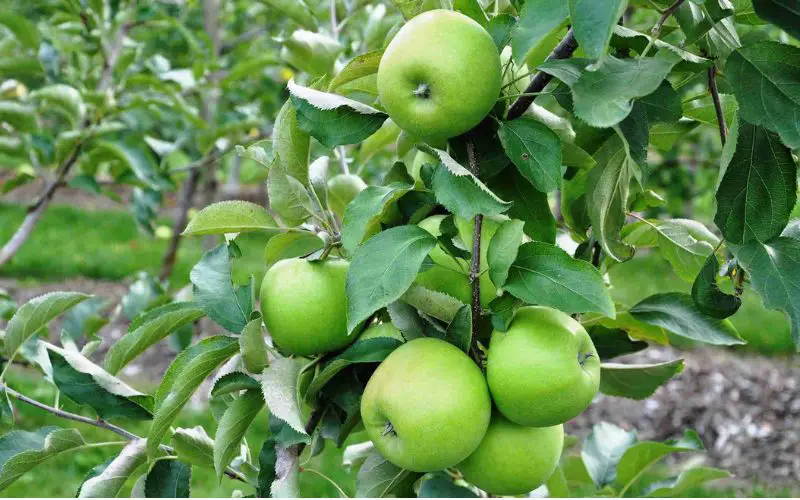
Lodi apple is a hardy, early-season fruit that thrives in high-altitude areas in the United States Department of Agriculture zones 3 to 8. The tree can grow to 20 feet (6 m.) tall with a 25-foot (8 m.) spread, even though there are dwarf varieties that get only 15 feet (4.5 m.) in height.
Lodi apples are large, greenish-yellow fruits with thin skin and few pores, contributing to the tart-sweet flavor.
The trees 0lneeds are pollinating partners, and they should be grown in a slightly acidic to neutral loamy soil that is well draining. Lodi apple seedlings are usually budded onto rootstock, and the graft should be above the soil’s surface when planted.
Granny Smith Apples
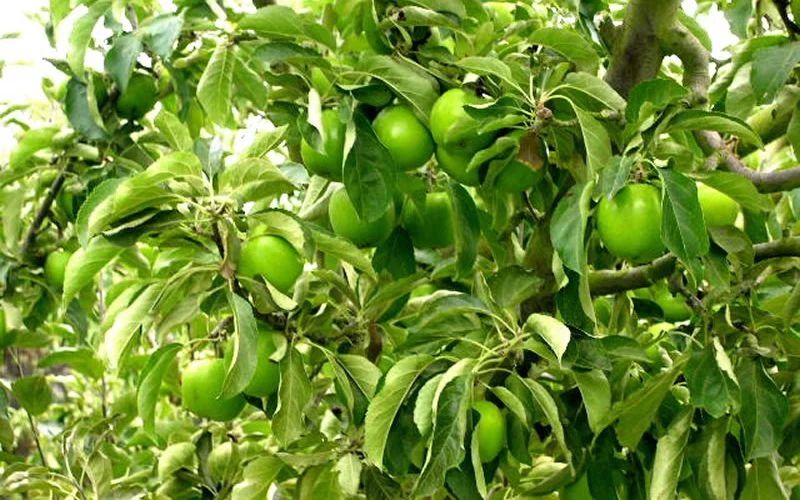
The apple cultivar, which originated from Australia, is named after Maria Ann Smith and is also known as the green apple or sour apple. The fruit is firm and hard and has light green skin and crisp, juicy flesh, even though the flavor is tart and acidic.
Granny smith is a high-altitude apple that will do well in mountainous areas. It is trendy because It remains firm when baked and is commonly used for cooking, eating, and even making apple cider. This Apple cultivar is prone to scab, cedar apple rust, powdery mildew, and moderately susceptible to fire blight.
The Haralson Apple
This apple variety has been cultivated and cherished in the USA for a long time. It is a very cold-hardy apple with a short growing season and can thrive in high altitudes.
Because of their cold hardiness, they do well in USDA Hardiness Zones 3 to 6. Some say they grow well in zones 2 and 7, requiring about 1,000 chill hours.
Haralson apple tree apples bloom in spring after all threats of late frost and ripen between late September and early October when the fruit becomes red over a yellow base.
The Fireside Apple
These apples, which are conical yet round-shaped, are known as “pomes.” They have a delicious, flavourful sweet taste and beautiful scarlet blush coloring. You can find their white flesh to be firm and crisp with a touch of acidity.
Fireside Apple is a hybrid tree that can grow to a height of about 15 feet and has a lifespan of more than 50 years. It requires full sunlight and a moist environment. It does not require a particular soil type or pH value. As much as the soil is kept moist, it will thrive.
Cox Orange Apple
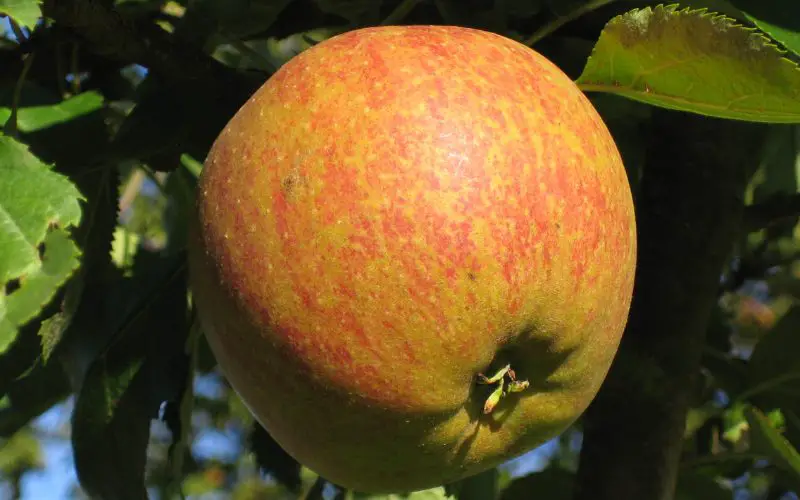
This apple cultivar, popularly called ‘Cox,’ produces small to medium size fruits with light yellow bases and orange-cloudy red tops. They have a delicate yet tangy flavor which many people love.
Cox grows well in the high-altitude area with deep and humus-rich soil with nutrient content. They ate moisture-loving plants that do in cold areas.
However, when Cox Apple is grown in heavy wet soil, it leaves them vulnerable to certain pests and diseases like collar rot, apple scab, powdery mildew, and others.
Harlared Apple
This apple cultivar can do well under ideal conditions in a high-altitude area. At maturity, the tree can be anything from 10 to 30 feet. This high-maintenance deciduous Apple has medium foliage while the flower is white.
Harlared apple cultivars need moderate moisture, a pH value of 6.5 to 7, and sandy loam to clay loam soil. Their bloom is mid-spring to early summer, and they need full sun to produce well.
Conclusion
Apple is one of the first fruit that comes to mind when one thinks of fruit if you live in a high-altitude area and wonder if you can grow apples there.
Helpful Article:
- How To Properly Store Grass Seeds
- Best Bagged Soil For Vegetable Garden
- How To Propagate Monstera Adansonii
- How to Grow Brussel Sprouts in Containers
The answer is YES because there are many cultivars of apples, and some of them, like Cox apples, golden, fireside apples, and others, can grow in these mountainous areas once they get their ideal growth requirements.
Thanks for taking the time to read our article, and we hope you find it helpful. Would you mind leaving a comment below if you have any suggestions?
Kindly reach out to people by sharing this post on social media.
If you liked this article, then please follow us on Facebook, Instagram, and Pinterest.

